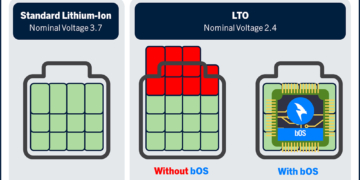-
Table of Contents
- Introduction
- The Use of Logistic Regression for Fraud Detection
- The Use of Logistic Regression for Natural Language Processing
- The Use of Logistic Regression for Recommender Systems
- The Use of Logistic Regression for Anomaly Detection
- The Use of Logistic Regression for Image Classification
- The Use of Logistic Regression for Text Classification
- Understanding the Limitations of Logistic Regression
- The Use of Logistic Regression for Time Series Forecasting
- Evaluating the Performance of Logistic Regression Models
- The Role of Regularization in Logistic Regression
- Analyzing the Impact of Feature Selection on Logistic Regression Performance
- Comparing Logistic Regression to Other Machine Learning Algorithms
- Understanding the Mathematics Behind Logistic Regression
- The Benefits of Logistic Regression for Binary Outcome Prediction
- How Logistic Regression Can Help Improve Predictive Modeling
- Conclusion
Introduction
Logistic regression is a powerful machine learning technique used to predict binary outcomes. It is a supervised learning algorithm that uses a linear combination of independent variables to predict a binary outcome. Logistic regression is used in a variety of applications, such as predicting customer churn, credit risk, and medical diagnosis. It is a popular choice for classification problems due to its simplicity and interpretability. Logistic regression can be used to identify important features and relationships between variables, and it can be used to make predictions about future outcomes. With the help of logistic regression, businesses can make informed decisions and improve their decision-making process.
The Use of Logistic Regression for Fraud Detection
Logistic regression is a powerful tool for fraud detection. It is a statistical technique used to predict the probability of a binary outcome, such as whether a transaction is fraudulent or not. Logistic regression can be used to identify patterns in data that indicate fraudulent activity.
Logistic regression works by analyzing a set of independent variables and their relationship to a dependent variable. The independent variables are used to predict the probability of the dependent variable. In the case of fraud detection, the independent variables are typically characteristics of the transaction, such as the amount, the type of payment, the location, and the time of day. The dependent variable is whether the transaction is fraudulent or not.
Logistic regression can be used to identify patterns in the data that indicate a higher probability of fraud. For example, if a certain type of transaction is more likely to be fraudulent, logistic regression can be used to identify this pattern. This can help to identify suspicious transactions and flag them for further investigation.
Logistic regression can also be used to identify relationships between different variables. For example, if certain types of transactions are more likely to be fraudulent when they occur at certain times of day, logistic regression can be used to identify this pattern. This can help to identify suspicious transactions and flag them for further investigation.
Logistic regression is a powerful tool for fraud detection. It can be used to identify patterns in data that indicate fraudulent activity, as well as relationships between different variables that can help to identify suspicious transactions. By using logistic regression, organizations can more effectively detect and prevent fraud.
The Use of Logistic Regression for Natural Language Processing
Logistic regression is a powerful tool for natural language processing (NLP). It is a supervised machine learning algorithm that is used to predict the probability of a categorical dependent variable. It is a type of regression analysis that is used to predict the outcome of a categorical dependent variable based on one or more independent variables.
Logistic regression is a popular choice for NLP tasks because it is a simple yet powerful algorithm that can be used to classify text data. It can be used to classify text data into different categories such as sentiment analysis, topic classification, and document classification. It can also be used to identify relationships between words and phrases in text data.
Logistic regression is a powerful tool for NLP because it can be used to identify patterns in text data. It can be used to identify relationships between words and phrases in text data, which can be used to classify text data into different categories. It can also be used to identify relationships between words and phrases in text data, which can be used to identify topics in text data.
Logistic regression is a powerful tool for NLP because it is a simple yet powerful algorithm that can be used to classify text data. It can be used to identify relationships between words and phrases in text data, which can be used to classify text data into different categories. It can also be used to identify relationships between words and phrases in text data, which can be used to identify topics in text data. Additionally, logistic regression can be used to identify relationships between words and phrases in text data, which can be used to identify sentiment in text data.
In conclusion, logistic regression is a powerful tool for natural language processing. It is a simple yet powerful algorithm that can be used to classify text data into different categories, identify relationships between words and phrases in text data, and identify topics and sentiment in text data.
The Use of Logistic Regression for Recommender Systems
Logistic regression is a powerful tool that can be used to build effective recommender systems. Recommender systems are used to suggest items to users based on their past behavior and preferences. Logistic regression is a type of supervised machine learning algorithm that can be used to predict the probability of a certain outcome. It is a powerful tool for predicting binary outcomes, such as whether a user will like a certain item or not.
Logistic regression works by using a set of independent variables to predict a dependent variable. In the case of a recommender system, the independent variables are the user’s past behavior and preferences, while the dependent variable is whether the user will like a certain item or not. The algorithm then uses the independent variables to calculate the probability of the user liking the item.
Logistic regression is a powerful tool for building recommender systems because it can accurately predict the probability of a user liking an item. It is also relatively easy to implement and can be used with a variety of data sources. Additionally, it can be used to make personalized recommendations based on a user’s past behavior and preferences.
Logistic regression is a powerful tool for building effective recommender systems. It can accurately predict the probability of a user liking an item and can be used with a variety of data sources. Additionally, it can be used to make personalized recommendations based on a user’s past behavior and preferences. As such, it is an invaluable tool for creating effective and efficient recommender systems.
The Use of Logistic Regression for Anomaly Detection
Logistic regression is a powerful tool for anomaly detection, which is the process of identifying data points that are significantly different from the majority of the data. Anomalies can be indicative of fraudulent activity, errors, or other unusual events. Logistic regression is a type of supervised machine learning algorithm that is used to predict the probability of a certain event occurring. It is a linear model that uses a logistic function to model the probability of a binary outcome.
Logistic regression is well-suited for anomaly detection because it can be used to identify data points that are significantly different from the majority of the data. The algorithm works by fitting a logistic function to the data and then using the fitted function to calculate the probability of a certain event occurring. Data points that have a low probability of occurring are considered to be anomalies.
Logistic regression can also be used to identify outliers in the data. Outliers are data points that are significantly different from the majority of the data. Logistic regression can be used to identify outliers by fitting a logistic function to the data and then using the fitted function to calculate the probability of a certain event occurring. Data points that have a low probability of occurring are considered to be outliers.
Logistic regression is a powerful tool for anomaly detection because it can be used to identify data points that are significantly different from the majority of the data. It is also well-suited for identifying outliers in the data. Logistic regression is a supervised machine learning algorithm that uses a logistic function to model the probability of a binary outcome. It is a linear model that can be used to identify data points that have a low probability of occurring.
The Use of Logistic Regression for Image Classification
Logistic regression is a powerful tool for image classification, which is the process of assigning a label to an image based on its content. It is a supervised learning algorithm that can be used to classify images into two or more categories. Logistic regression is a type of regression analysis that is used to predict the probability of a certain event occurring. It is a linear model that uses a logistic function to model the probability of a certain class or event existing.
Logistic regression is a popular choice for image classification because it is a simple and efficient algorithm. It is easy to implement and can be used to classify images with a high degree of accuracy. The algorithm works by taking a set of input features and using them to predict the probability of a certain class or event occurring. The input features can be anything from the color of an image to the shape of an object.
Logistic regression can be used to classify images into two or more categories. For example, it can be used to classify images of cats and dogs. The algorithm will take the input features of the image and use them to predict the probability of the image belonging to either a cat or a dog.
Logistic regression can also be used to classify images into more than two categories. For example, it can be used to classify images of different types of animals. The algorithm will take the input features of the image and use them to predict the probability of the image belonging to a certain type of animal.
Logistic regression is a powerful tool for image classification because it is a simple and efficient algorithm. It is easy to implement and can be used to classify images with a high degree of accuracy. It is also a popular choice for image classification because it is a linear model that uses a logistic function to model the probability of a certain class or event existing.
The Use of Logistic Regression for Text Classification
Logistic regression is a powerful tool for text classification, which is the process of assigning a text document to one or more categories based on its content. Logistic regression is a supervised machine learning algorithm that is used to predict the probability of a categorical dependent variable. It is a type of regression analysis that is used to model the relationship between a set of independent variables and a binary dependent variable.
Logistic regression is a popular choice for text classification because it is a simple yet powerful algorithm that can be used to classify text documents into different categories. The algorithm works by using a set of independent variables to predict the probability of a text document belonging to a particular category. The independent variables can be words, phrases, or other features extracted from the text document.
The logistic regression algorithm is trained on a set of labeled documents. During the training process, the algorithm learns the relationship between the independent variables and the dependent variable. Once the algorithm is trained, it can be used to classify new documents. The algorithm will assign a probability to each category for a given document, and the category with the highest probability is chosen as the predicted category.
Logistic regression is a powerful tool for text classification because it is simple to implement and can be used to classify documents into multiple categories. It is also a fast and efficient algorithm that can be used to classify large amounts of text data. Additionally, logistic regression can be used to identify important features in a text document that can be used to improve the accuracy of the classification.
Understanding the Limitations of Logistic Regression
Logistic regression is a powerful tool for predicting binary outcomes, such as whether a customer will purchase a product or not. However, it is important to understand the limitations of logistic regression in order to ensure that it is used appropriately.
First, logistic regression is limited in its ability to capture complex relationships between variables. It is a linear model, meaning that it assumes that the relationship between the independent and dependent variables is linear. If the relationship is non-linear, logistic regression may not be able to accurately capture it.
Second, logistic regression is limited in its ability to handle categorical variables. It can only handle binary categorical variables, meaning that it cannot handle variables with more than two categories.
Third, logistic regression is limited in its ability to handle outliers. Outliers can have a significant impact on the results of logistic regression, and if they are not handled properly, the results may be inaccurate.
Finally, logistic regression is limited in its ability to handle missing data. If there are missing values in the data, logistic regression may not be able to accurately capture the relationship between the variables.
Overall, logistic regression is a powerful tool for predicting binary outcomes, but it is important to understand its limitations in order to ensure that it is used appropriately.
The Use of Logistic Regression for Time Series Forecasting
Logistic regression is a powerful tool for time series forecasting. It is a type of regression analysis that is used to predict the probability of a certain event occurring. Logistic regression is a supervised learning algorithm that can be used to analyze data and make predictions about future events.
Time series forecasting is the process of predicting future values of a given variable based on past values. It is a powerful tool for predicting future trends and patterns in data. Logistic regression is a popular method for time series forecasting because it is able to capture non-linear relationships between variables. It is also able to handle large datasets and can be used to identify important factors that influence the outcome of a given event.
Logistic regression works by fitting a model to the data that best describes the relationship between the independent variables and the dependent variable. The model is then used to make predictions about future values of the dependent variable. The model is trained using a training dataset and then tested on a test dataset. The accuracy of the model is then evaluated based on the performance of the model on the test dataset.
Logistic regression is a powerful tool for time series forecasting because it is able to capture non-linear relationships between variables. It is also able to handle large datasets and can be used to identify important factors that influence the outcome of a given event. Logistic regression is a popular method for time series forecasting because it is able to capture non-linear relationships between variables and can be used to make accurate predictions about future events.
Evaluating the Performance of Logistic Regression Models
Logistic regression is a powerful and widely used statistical technique for predicting the outcome of a binary dependent variable. It is used in a variety of applications, such as predicting customer churn, credit risk, and medical diagnosis. As with any predictive model, it is important to evaluate the performance of logistic regression models to ensure that they are providing accurate and reliable predictions.
The most common way to evaluate the performance of a logistic regression model is to calculate the model’s accuracy. This is done by comparing the model’s predicted values to the actual values of the dependent variable. The accuracy of the model is then expressed as a percentage, with higher percentages indicating better performance.
In addition to accuracy, other metrics can be used to evaluate the performance of logistic regression models. These include precision, recall, and the area under the receiver operating characteristic (ROC) curve. Precision measures the proportion of true positives that are correctly identified by the model, while recall measures the proportion of true positives that are correctly identified out of all positives. The area under the ROC curve is a measure of the model’s ability to distinguish between positive and negative outcomes.
Finally, it is important to consider the model’s ability to generalize to new data. This can be evaluated by using cross-validation techniques, such as k-fold cross-validation. This involves splitting the data into k subsets, training the model on k-1 subsets, and then testing the model on the remaining subset. This process is repeated k times, and the average performance of the model is then calculated.
In summary, logistic regression models can be evaluated using a variety of metrics, including accuracy, precision, recall, and the area under the ROC curve. Additionally, it is important to consider the model’s ability to generalize to new data by using cross-validation techniques. By evaluating the performance of logistic regression models, organizations can ensure that they are using the most accurate and reliable models for their predictive tasks.
The Role of Regularization in Logistic Regression
Regularization is an important technique used in logistic regression to prevent overfitting. Overfitting occurs when a model is overly complex and is able to fit the training data too closely, resulting in poor generalization to unseen data. Regularization helps to reduce the complexity of the model by penalizing large weights, thus reducing the variance of the model and improving its generalization performance.
Regularization is implemented by adding a penalty term to the cost function of the logistic regression model. This penalty term is a function of the weights of the model and is designed to reduce the magnitude of the weights. The most common penalty term used in logistic regression is the L2 regularization, which is the sum of the squares of the weights. The penalty term is added to the cost function and the weights are adjusted to minimize the cost function.
Regularization can be used to control the complexity of the model and to reduce overfitting. It can also be used to reduce the number of features used in the model, thus reducing the computational complexity of the model. Regularization can also be used to improve the interpretability of the model by reducing the number of features used and making the model more interpretable.
In summary, regularization is an important technique used in logistic regression to prevent overfitting and improve the generalization performance of the model. It can also be used to reduce the number of features used in the model and improve its interpretability.
Analyzing the Impact of Feature Selection on Logistic Regression Performance

Feature selection is an important step in the development of any machine learning model. It is the process of selecting the most relevant features from a dataset to use in the model. The goal of feature selection is to reduce the complexity of the model and improve its performance. In this article, we will discuss the impact of feature selection on the performance of logistic regression models.
Logistic regression is a popular machine learning algorithm used for classification tasks. It is a linear model that uses a logistic function to predict the probability of a given outcome. The model is trained using a set of features, which are used to make predictions. The performance of the model is dependent on the quality of the features used.
Feature selection is a process of selecting the most relevant features from a dataset to use in the model. The goal of feature selection is to reduce the complexity of the model and improve its performance. Feature selection can be done manually or using automated methods such as recursive feature elimination or principal component analysis.
The impact of feature selection on the performance of logistic regression models can be significant. Feature selection can reduce the complexity of the model and improve its accuracy. It can also reduce the amount of time needed to train the model and improve its generalization performance.
In addition, feature selection can help to reduce overfitting. Overfitting occurs when the model is too complex and is able to memorize the training data, but fails to generalize to unseen data. Feature selection can help to reduce overfitting by removing irrelevant features and reducing the complexity of the model.
In conclusion, feature selection can have a significant impact on the performance of logistic regression models. It can reduce the complexity of the model, improve its accuracy, reduce the amount of time needed to train the model, and reduce overfitting. Feature selection is an important step in the development of any machine learning model and should not be overlooked.
Comparing Logistic Regression to Other Machine Learning Algorithms

Logistic regression is a powerful machine learning algorithm used for classification tasks. It is a supervised learning algorithm that is used to predict the probability of a categorical dependent variable. It is one of the most widely used algorithms in the field of machine learning and is often used to solve binary classification problems.
Logistic regression is a linear model, meaning that it is based on linear combinations of the input features. It is a relatively simple algorithm and is easy to interpret and implement. It is also computationally efficient and can be used to solve large-scale problems.
However, logistic regression has some limitations. It is not suitable for complex non-linear problems and is not able to capture complex relationships between the input features and the output. It is also sensitive to outliers and can be affected by multicollinearity.
Other machine learning algorithms such as decision trees, support vector machines, and neural networks can be used to solve more complex problems. Decision trees are non-linear models that can capture complex relationships between the input features and the output. Support vector machines are powerful algorithms that can be used to solve both linear and non-linear problems. Neural networks are powerful models that can learn complex patterns from data.
In conclusion, logistic regression is a powerful and widely used machine learning algorithm. It is a linear model that is easy to interpret and implement. However, it is not suitable for complex non-linear problems and is sensitive to outliers. Other machine learning algorithms such as decision trees, support vector machines, and neural networks can be used to solve more complex problems.
Understanding the Mathematics Behind Logistic Regression
Logistic regression is a powerful statistical technique used to predict the probability of a binary outcome. It is a type of regression analysis that is used to model the probability of a categorical response variable based on one or more predictor variables. Logistic regression is used in a wide variety of applications, including medical diagnosis, credit scoring, and market segmentation.
At its core, logistic regression is a mathematical model that uses a set of independent variables to predict the probability of a binary outcome. The model is based on the logistic function, which is a sigmoid curve that takes any real-valued number and maps it into a value between 0 and 1. This value is then interpreted as the probability of the binary outcome.
The logistic regression model is estimated using maximum likelihood estimation. This involves finding the parameters of the model that maximize the likelihood of the observed data. The parameters of the model are estimated by minimizing the sum of the squared errors between the observed data and the predicted values.
The logistic regression model can be used to make predictions about the probability of a binary outcome. The model can also be used to identify the most important predictors of the outcome. This is done by examining the coefficients of the model, which indicate the relative importance of each predictor.
Logistic regression is a powerful tool for predicting the probability of a binary outcome. It is a versatile technique that can be used in a variety of applications. Understanding the mathematics behind logistic regression is essential for using it effectively.
The Benefits of Logistic Regression for Binary Outcome Prediction
Logistic regression is a powerful tool for predicting binary outcomes, such as whether a customer will purchase a product or whether a patient will respond to a treatment. It is a widely used statistical technique that can be used to analyze a wide range of data, from medical records to customer behavior. Logistic regression has several advantages over other methods of binary outcome prediction.
First, logistic regression is relatively easy to implement and interpret. It is a linear model, meaning that the relationship between the predictor variables and the outcome is linear. This makes it easier to understand the results of the model and to explain them to others. Additionally, logistic regression is relatively robust to outliers and does not require a large sample size to produce reliable results.
Second, logistic regression can be used to identify important predictors of the outcome. By examining the coefficients of the model, it is possible to determine which variables are most important in predicting the outcome. This can be useful for understanding the underlying relationships between the predictor variables and the outcome.
Third, logistic regression can be used to estimate the probability of a particular outcome. This can be useful for making decisions about whether to take a particular action or not. For example, if a doctor is trying to decide whether to prescribe a particular medication, they can use logistic regression to estimate the probability that the patient will respond positively to the medication.
Finally, logistic regression can be used to adjust for confounding variables. This means that the model can take into account other factors that may influence the outcome, such as age or gender. This can help to ensure that the results of the model are more accurate and reliable.
Overall, logistic regression is a powerful tool for predicting binary outcomes. It is relatively easy to implement and interpret, can identify important predictors of the outcome, can estimate the probability of a particular outcome, and can adjust for confounding variables. For these reasons, logistic regression is a popular choice for binary outcome prediction.
How Logistic Regression Can Help Improve Predictive Modeling
Logistic regression is a powerful predictive modeling technique that can be used to improve the accuracy of predictive models. It is a type of regression analysis that is used to predict the probability of a certain outcome based on a set of independent variables. Logistic regression is a widely used technique in many fields, including marketing, finance, and healthcare.
Logistic regression is a powerful tool for predictive modeling because it can accurately predict the probability of an outcome based on a set of independent variables. This makes it ideal for predicting the likelihood of a certain event occurring, such as whether a customer will purchase a product or whether a patient will respond to a certain treatment. Logistic regression can also be used to identify important factors that influence the outcome of a prediction.
Logistic regression can also be used to identify important interactions between independent variables. This can help to improve the accuracy of predictive models by taking into account the interactions between variables. For example, if two variables are found to interact in a certain way, the model can be adjusted to take this into account and improve the accuracy of the prediction.
Logistic regression can also be used to identify non-linear relationships between independent variables. This can help to improve the accuracy of predictive models by taking into account the non-linear relationships between variables. For example, if two variables are found to have a non-linear relationship, the model can be adjusted to take this into account and improve the accuracy of the prediction.
Overall, logistic regression is a powerful tool for predictive modeling that can be used to improve the accuracy of predictive models. It can be used to identify important factors that influence the outcome of a prediction, identify important interactions between independent variables, and identify non-linear relationships between independent variables. By taking these factors into account, logistic regression can help to improve the accuracy of predictive models.
Conclusion
Logistic regression is a powerful machine learning technique for predicting binary outcomes. It is a supervised learning algorithm that uses a linear combination of features to predict the probability of an outcome. It is a versatile and widely used algorithm that can be used for a variety of applications, such as predicting customer churn, credit risk, and medical diagnosis. Logistic regression is a powerful tool for predicting binary outcomes and can be used to make accurate predictions with minimal effort.














